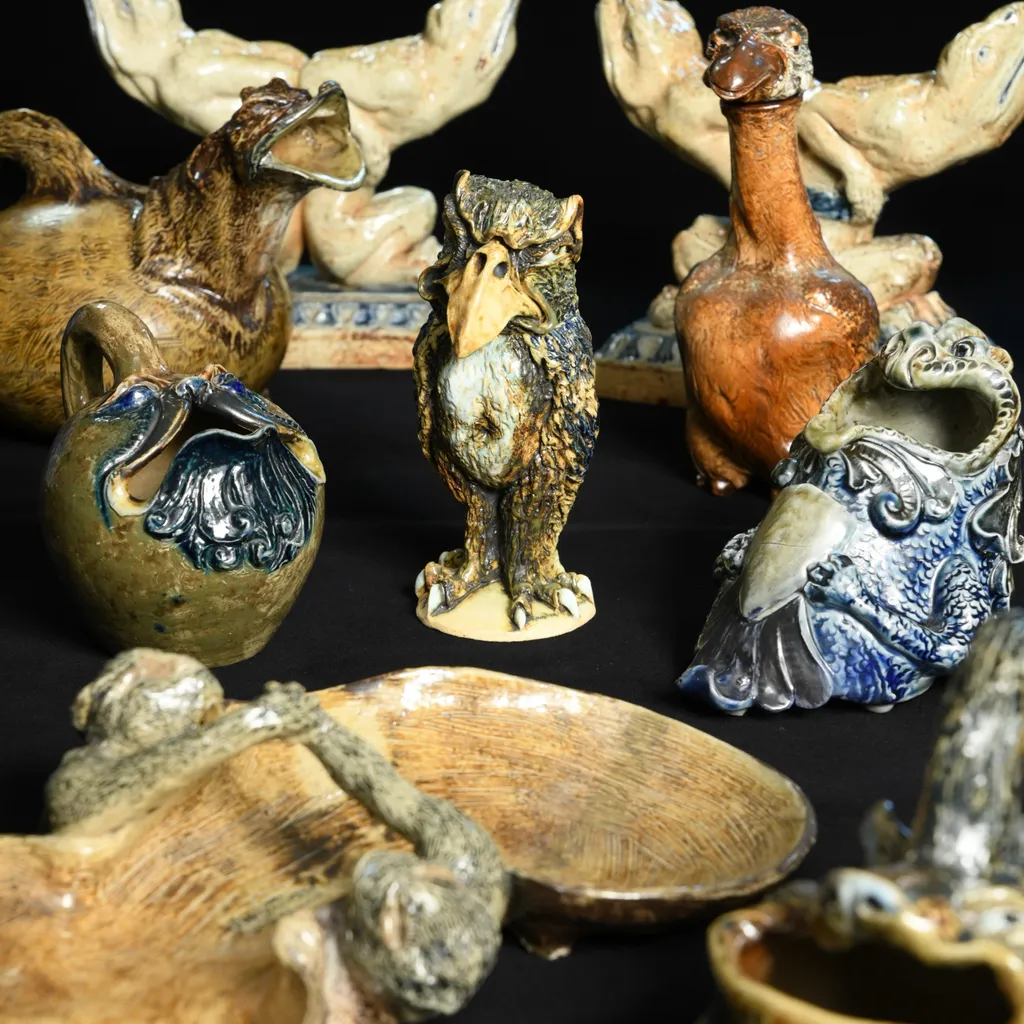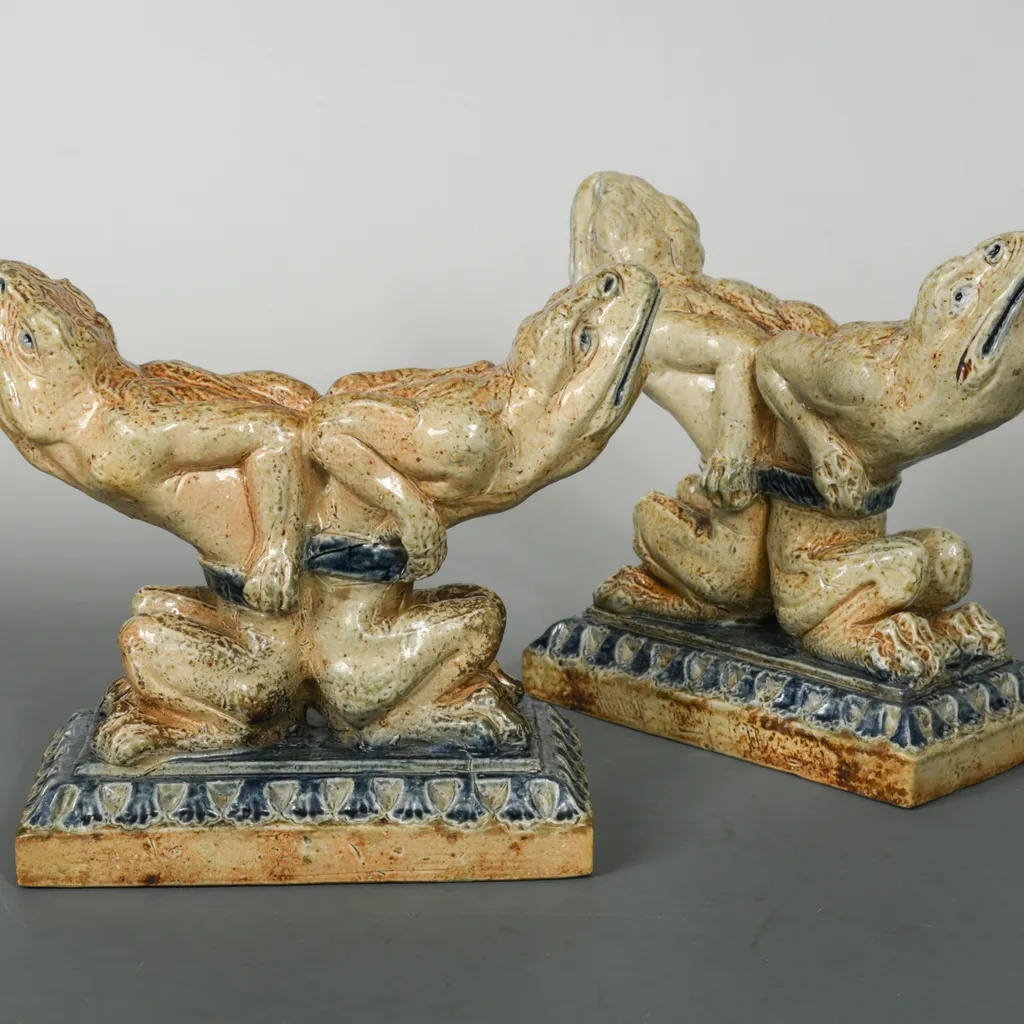Pottery created by the Martin Brothers, Victorian masters of the grotesque, hit the headlines in 2018 when a piece was banned from export by the UK government on the grounds of its ‘outstanding aesthetic importance’.
Having sold for an eye-watering £200,000, a huge grinning ceramic crab was bought by The Box museum in Plymouth, and promptly labelled a national treasure.
While this sort of price may well be out of reach for most of us, the good news is that there are more affordable options if you're keen to start collecting Martinware.
What is Martinware?
The Martin Brothers started what is regarded as Britain’s first studio pottery in 1873 from a studio in Fulham, creating bizarre pottery pieces with a bent towards the grotesque, all with an air of Gothic fantasy.
Jugs with faces, spoon warmers in the shape of bizarre animals with teeth or, most famously, the 'Wally Birds', grotesque stoneware tobacco jars or vases quickly became some of the most famous works to come out of Victorian pottery making.
These were part of the Aesthetic Movement, which shook up Victorian Britain. The Martin Brothers’ work sat alongside the likes of William Morris and Oscar Wilde, moving away from the mass-produced wares that had become so prevalent during the Industrial Revolution and delivering individual, handmade pieces.

Keen collectors at the time were the likes of Edward Burne-Jones and Dante Gabriel Rosetti, whilst in 1914 Queen Mary ordered 60 pieces of Martinware to be exhibited at the Paris Exposition. And it is the tale of tragedy around the Martin Brothers themselves that all adds to their intrigue.
Robert Wallace was quoted to have said in 1910: ‘My brothers and myself never got more than a labourer’s wages’. They could only afford to fire the kiln once or twice a year and as they had no money for protective containers for the pots during firing, that meant that many were damaged.
The four brothers had tragic fates, with Charles Martin ending up in an asylum in 1909, Edwin dying of facial cancer and Walter dying of a cerebral haemorrhage only three months later. The longest living was Robert Wallace, who was recorded as being shocked when a Martinware pot sold for £50 at Sotheby’s in 1921.
How much does Martinware sell for?
Martinware has been rising in popularity since the 1970s when, in 1978, dealer Richard Dennis staged a landmark exhibition that brought the works back into the public eye. Instantly recognisable, the sky is now the limit for original Martin Brothers pieces. For example, a Wally Bird jar was sold at auction in 2021 for £38,000, whilst a depiction of Benjamin Disraeli in the form of a Wally Bird achieved $233,000 in 2015.
As the firing process at the Martin Brothers’ studio was precarious, there is a finite number of original pieces still surviving, with the majority of these being in the hands of a dedicated number of collectors, mainly in the UK and the US.
Where to buy Martinware
Keep an eye out for Martinware at Cheffins, whose Art & Design sales often include items by the Martin Brothers.

While the prices for the most iconic Martinware pieces are astronomical, for those looking to collect works by the brothers there are cheaper options.
The Martin Brothers produced a number of ornamental and more typical Victorian pieces, including jars, jugs, bowls and so on, which were modestly decorated, many with flowers or leaves, and which tend to sell for a few hundred pounds.
Martin Millard's top tip
As with anything, the best advice is always to buy the best you can afford and from a reputable dealer or auction house. If you unable to examine the piece in the flesh, obtain a thorough condition report in advance, and always take note of a piece's dimensions. Often they are rather larger, or indeed, smaller than you are imagining!
You might also like...
If you've enjoyed this introduction to collecting Martinware, you may also like to read Birds, Toads and Fish: The Grotesque Charm of the Martin Brothers